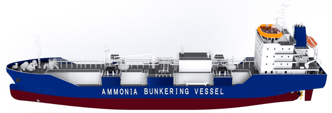KSTAR project successfully utilises Air Liquide technology
Scientists at KSTAR (Korean Superconducting Tokamak Advanced Research) in South Korea have successfully generated the first plasmas in the core of their new Tokamak, utilizing Air Liquide’s helium liquefaction technology.
The National Fusion Research Institute (NFRI) in South Korea has developed a Tokamak, an ultra-sophisticated physics-based instrument with the purpose to generate plasmas that make possible the conditions required for controlled nuclear fusion of atoms.
This type of reaction, which also occurs in the sun, releases a large amount of energy that can be converted into electrical energy. Much like the goings-on at CERN’s LHC, the operation is highly scientific and also requires similar superconducting magnet-cooling technology as that used by the LHC.
Cooling using helium
In order to obtain the very powerful electromagnetic fields necessary for the confinement of the physical reaction, superconducting magnets must be used, which only function at extremely low temperatures.
... to continue reading you must be subscribed










